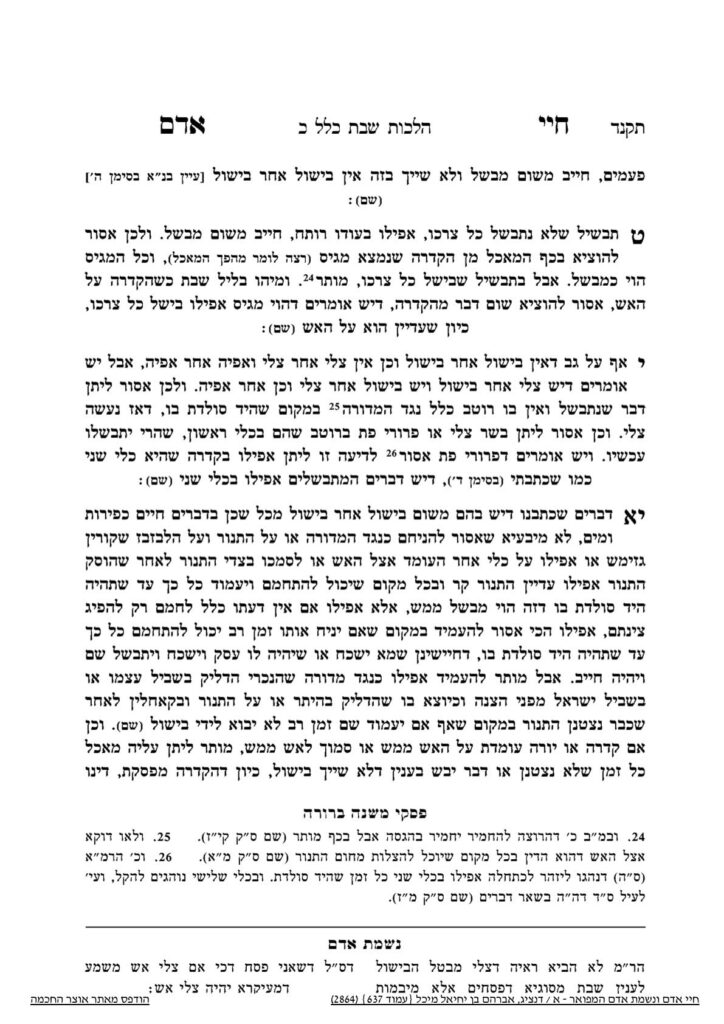We are continuing in siman 11. We learned that the Chayei Adam gave three scenarios in which nesinah lechatchilla is muttar: when the food is placed keneged hamadurah, the food is placed on top of another pot of food, or it is placed on top of an empty pot. We clarified that even when it is placed keneged hamadurah, one must be careful to ensure that the food does not actually cook, as then there would be an issue of bishul. Today, we will discuss this point further.
The Chayei Adam writes that even when it is muttar to perform nesinah lechatchilla, there is a concern of bishul (achar bishul), and this concern certainly applies to fruits which are edible raw.
It is assur to place such an item directly on top of the fire, adjacent to the fire, or on the ledge of the oven. Ovens used to be much larger, and were used for heating the home. There was a ledge on top which was used for cooking, and it is that ledge to which the Chayei Adam refers.
Additionally, one cannot place food on top of another pot, or next to the oven on the ground when the oven is heated, or next to a cold oven which will be heated later.
(Since the oven was the source of heat for the entire house, it was muttar to perform amira l’achum to ask a non-Jew to turn on the oven if there is a concern that people will be cold. To be clear, “cold” does not refer to a slight discomfort, but to a concern for one’s health. This was especially important in the Northern European countries during the winter. In such a case, due to the potential sakanah or illness involved, it is even muttar to ask a non-Jew to perform a melacha deoraysa, such as turning on the oven.)
The case of the Chayei Adam is that once it is muttar to ask the non-Jew to light the oven, the Jew wishes to take advantage and place a pot of food adjacent to the fire so that it will be warm. The Chayei Adam writes that it is assur to do so, because if the food is left adjacent to the fire, it will reach yad soledes bo and cook.
Even if a person has no intention of heating the food, but wants to place the food adjacent to a warm area simply to remove the chill of the item, the Chayei Adam writes that it is still assur. Chazal prohibited placing an item in a place which could reach yad soledes bo, in case one forgets and it cooks.
Summary
Nesinah lechatchilla is assur on Shabbos, even if the fire is garuf v’katum.
Nevertheless, according to the Chayei Adam, there are three scenarios in which nesinah lechatchillah will be muttar, due to the hekker inherent in the placement of the food:
- When the food is placed keneged hamadurah, further away from the fire;
- When the food is placed on top of another pot which is full of food;
- When the food is placed on top of an empty pot. However, the poskim do not accept this third scenario.



